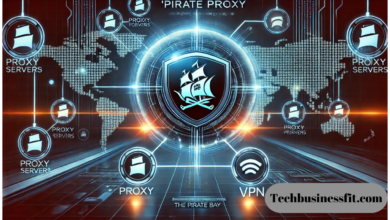Video Piracy Prevention for Live Streaming Platforms

Live streaming platforms have become a primary medium for content creators, educators, and businesses to connect with audiences. However, along with the opportunities, live streaming also faces a significant threat: video piracy. As live streaming becomes more popular, preventing video piracy is essential to safeguard content creators’ intellectual property, protect revenue, and maintain the credibility of the platform. This blog will explore effective strategies for video piracy prevention, particularly tailored to live streaming platforms.
Understanding Video Piracy and Its Impact
Video piracy involves unauthorized copying, distribution, or use of video content. For live streaming platforms, piracy can manifest in various forms, such as illegal downloads, screen recording, or unauthorized retransmission of live streams. The impact of video piracy is profound:
- Revenue Loss: Piracy can lead to substantial revenue losses for content creators and platforms. A report by Digital TV Research estimates that the global online TV and movie industry could lose billions annually due to piracy.
- Damage to Brand Reputation: When pirated content becomes widespread, it can harm the brand reputation of the platform or content creator, reducing trust among legitimate users and partners.
- Legal Implications: Platforms that fail to take adequate steps to prevent piracy may face legal challenges and penalties, further compounding financial losses.
Key Strategies for Video Piracy Prevention on Live Streaming Platforms
Preventing video piracy on live streaming platforms requires a multi-layered approach. Here are some effective strategies:
1. Implement Digital Rights Management (DRM)
Digital Rights Management (DRM) is one of the most robust solutions for preventing unauthorized access and redistribution of video content. DRM technologies such as Google Widevine, Apple FairPlay, and Microsoft PlayReady offer encryption and licensing controls, ensuring that only authorized users can access the content. How DRM Works: DRM encrypts the video content during transmission and allows it to be decrypted only by licensed devices or applications. This prevents unauthorized users from accessing or copying the content. Benefits for Live Streaming: For live streaming platforms, DRM can help secure live broadcasts, ensuring that only paying or authorized viewers can watch the content in real time.
2. Use Watermarking Techniques
Watermarking involves embedding a unique identifier, such as a logo or a user ID, directly into the video content. This technique serves as a deterrent for pirates and helps in identifying the source of leaked content. Visible Watermarks: Logos or text displayed visibly on the video. While they can be removed with editing software, they still act as a deterrent. Invisible Watermarks: Embedded within the video data, these watermarks are difficult to detect and remove. They allow platforms to trace the source of pirated content without disrupting the viewer’s experience.
3. Deploy Geo-Blocking Measures
Geo-blocking restricts access to content based on geographic location. This is particularly useful for live streaming platforms that have regional licensing agreements or want to limit content availability to certain areas. How Geo-Blocking Works: Geo-blocking uses the viewer’s IP address to determine their location and either allows or denies access to the content. Effectiveness: This technique helps prevent unauthorized access from regions where the content is not intended to be available, reducing the chances of piracy from those areas.
4. Adopt Secure Streaming Protocols
Using secure streaming protocols like HTTPS, RTMPS (Real-Time Messaging Protocol Secure), and HLS (HTTP Live Streaming) ensures that the transmission of live streams is encrypted. This encryption protects the content from being intercepted or hijacked during transmission. Advantages of Secure Protocols: These protocols add a layer of security by encrypting the data packets sent over the internet, making it more challenging for pirates to capture the content. SSL Certificates: Implementing SSL certificates further protects streaming content by ensuring that the connection between the platform and the viewer is secure.
5. Monitor and Take Down Pirated Content
Continuous monitoring of the internet, including social media platforms, torrent sites, and streaming forums, is crucial for identifying instances of video piracy. Automated tools, such as Content ID and DMCA takedown services, help detect and remove pirated content. AI and Machine Learning: Advanced tools use AI and machine learning algorithms to scan the internet for pirated content, often identifying infringements faster than manual processes. DMCA Takedown Notices: Platforms should have procedures in place for issuing DMCA takedown notices to websites hosting pirated content, ensuring quick removal.
6. Educate and Empower Content Creators
Educating content creators about the risks of piracy and the importance of securing their content is vital. Platforms can provide resources and tools to help creators protect their content, such as guidelines on using DRM, watermarking, and other security measures. Creator Empowerment: By empowering creators to take proactive steps against piracy, platforms can reduce the overall volume of pirated content and enhance their reputation as a secure and trusted environment.
Conclusion
As live streaming continues to grow in popularity, video piracy remains a pressing concern for content creators and platforms alike. Implementing a combination of strategies—such as DRM, watermarking, geo-blocking, secure streaming protocols, monitoring, and education-can significantly reduce the risk of piracy and ensure that creators and platforms can thrive in a secure digital environment.
Also Read: The Rise of Automatic Pizza Vending Machines



